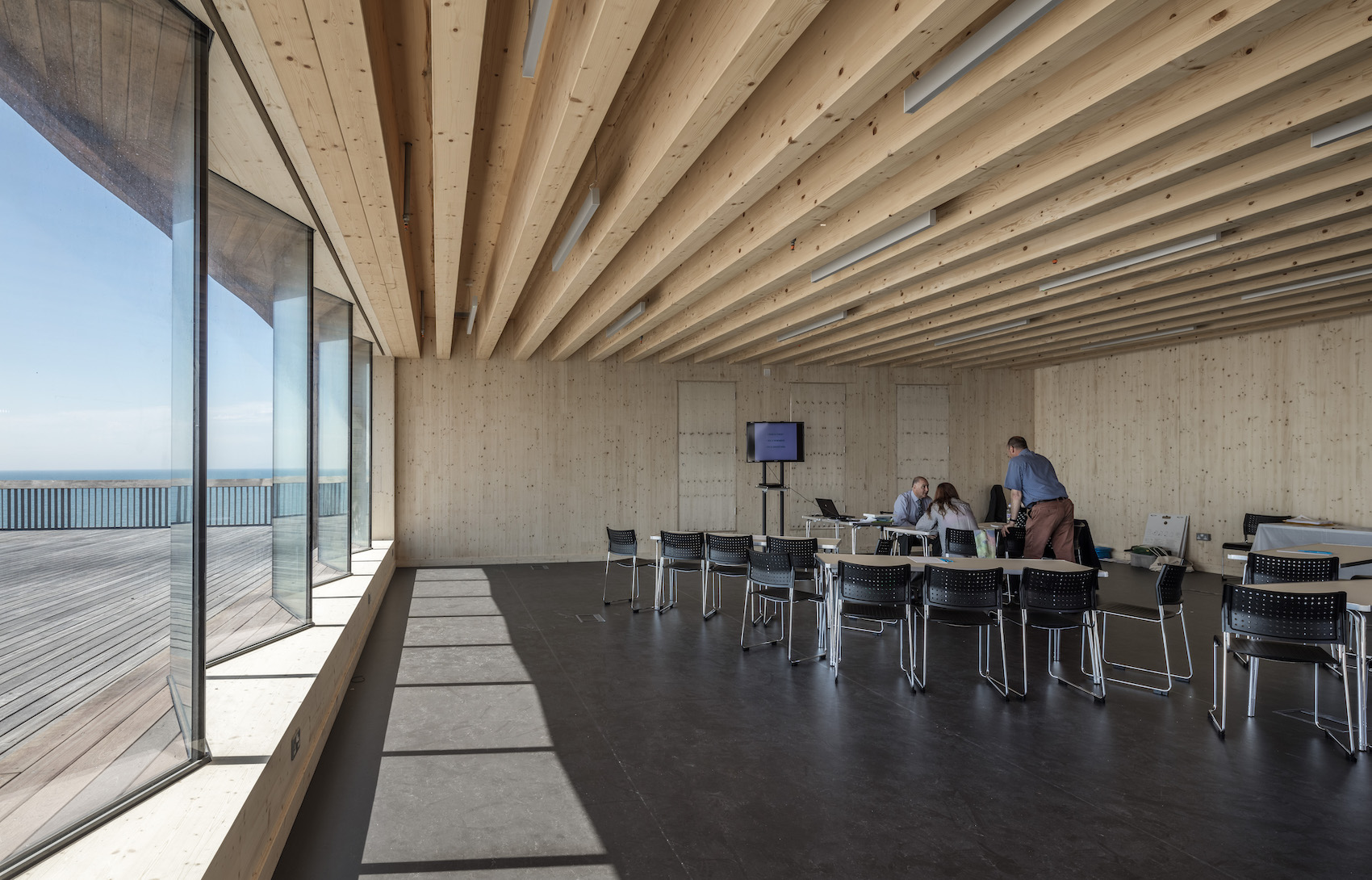Martin Milner, Managing Director of Milner Associates, and Structural Timber Association Technical Consultant, answers readers’ questions on structural timber.
Creative use of cross laminated timber at Hastings Pier visitor centre in East Sussex, designed by drMM (ph: Structural Timber Association)
What are the main benefits of using structural timber on construction projects?
As we see sustainable construction climb higher up the priority list, timber has inevitably grown in popularity due to its versatility and environmental benefits. In Scotland, more than 85 per cent of homes are being built in timber-frame, with market share in the UK currently at 23 per cent and rising steadily. Timber represents the UK’s greatest opportunity for achieving net zero by 2050 due to its carbon saving benefits. The speed of timber frame construction can also significantly reduce build programmes and time spent on site.
Are there any disadvantages?
On site storage requires additional care and attention. Once the engineered timber has been delivered to site, it is important to ensure that it is stored correctly and away from any potential moisture ingress. We would always advise a thorough programme of protection, moisture inspections, ventilation, and allocated drying out periods (if necessary) to avoid any issues. The Structural Timber Association (STA) has produced a guide to moisture management and durability, which outlines the steps required to develop an effective moisture management strategy.
What are the main structural timber systems available?
There are two types of timber frame system: open panel and closed panel. Open panel systems are structurally engineered to serve as the loadbearing inner leaf of the external wall. Closed panel systems are pre-insulated and can be supplied with fitted windows and internal service zones for easy installation and construction.
Cross laminated timber (CLT) comprises perpendicular alternating laminations of softwood forming a solid panel. It is used to construct walls, floors and roofs, with quick and easy fitting on site.
There are also structural insulated panels (SIPs), an advanced method of construction whereby an insulating foam core is sandwiched between two structural facings, normally oriented strand board (OSB).
Are timber structures suitable for all types of building?
Timber should always be used where it provides the best fit for the application/design and is appropriately detailed. We always advocate a ‘right material, right job’ approach.
How high is it possible to build using structural timber?
The height very much depends on the system and application. The market for lightweight timber systems is up to four storeys, beyond which a complex fire assessment is required. The possibilities for increasing the use of CLT and glulam (glued laminated timber) can be demonstrated by the Mjøstårnet in Norway (2019) – the world’s tallest timber building at 84.4-metres high.
What can be done to ensure the fire performance/integrity of timber structures?
The key is that all buildings must be designed, detailed, manufactured, assembled and erected with care and attention, as well as complying with the Building Regulations for fire safety as a minimum standard. The STA invests in a continuous programme of testing, carrying out fire performance research to provide test-based evidence of behaviour.
What is the recommended/permitted moisture content for structural timber?
This is a complex area, but in simple terms the moisture level of timber should not go above 20 per cent in common softwoods. Typically, correctly designed residential structures would not rise above 18 per cent and be more commonly between 10 and 14 per cent depending on their location.
How do timber structures compare to steel and concrete ones in terms of cost?
A study carried out by Rider Levett Bucknall for the housing sector concluded price parity with loadbearing masonry when all construction factors were taken into the costing model. More complex buildings, such as those designed and engineered using mass timber systems, may or may not be subject to the same cost parity due to design features.
What is the life-expectancy of timber structures?
Around the world there are examples of timber buildings that are hundreds of years old. Providing that the structural timber is correctly designed for the building, there is no reason why a modern timber structure could not also last for hundreds of years.
Can timber structures be repurposed, reused and/or recycled at the end of their life?
The current practice when demolishing a timber-based structure is for the timber to be repurposed for biomass energy production. The timber industry recognises that the volume of material being used in this way could serve the climate-change agenda better if it were repurposed in other ways, such as for the wood board industry or furniture industry. Steps are also being taken in the design phase of timber buildings where the structural elements can be repurposed into other buildings.
Is structural timber suitable for retrofit projects?
There are several systems on the market that essentially wrap the building in a lightweight timber system. These are fully designed and engineered solutions, which contribute to improving energy conservation. The Gramophone Works in London by Studio RHE is an exemplar refurbishment project using engineered structural timber.
For further information visit: www.structuraltimber.co.uk
Source: Architecture Today

